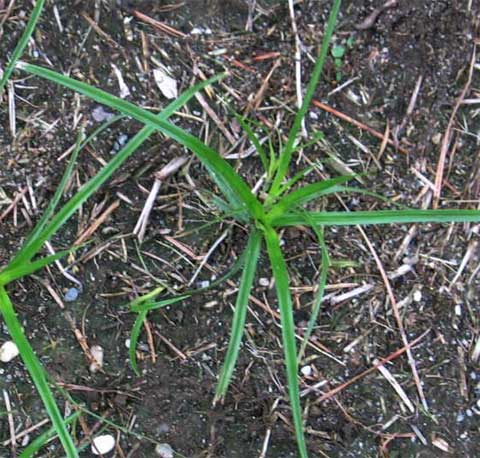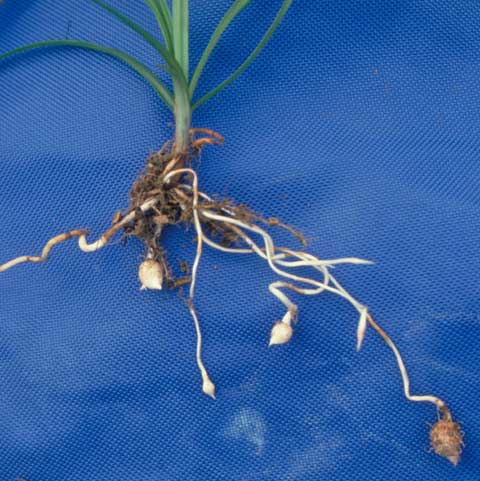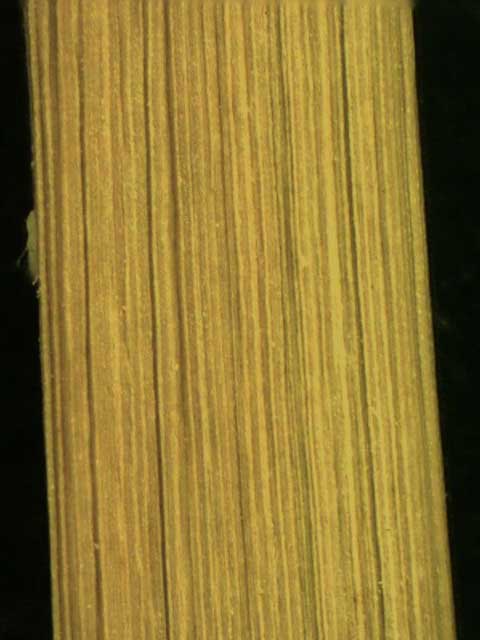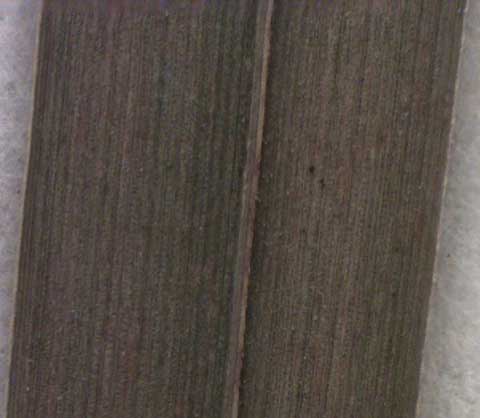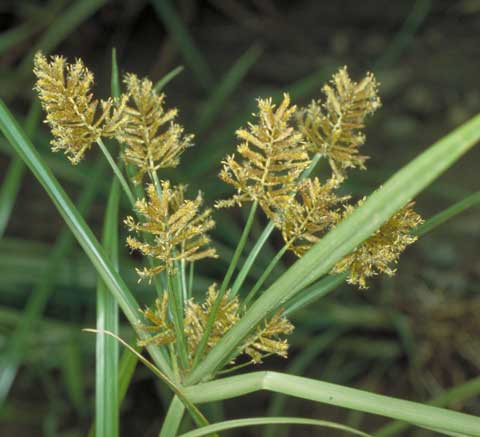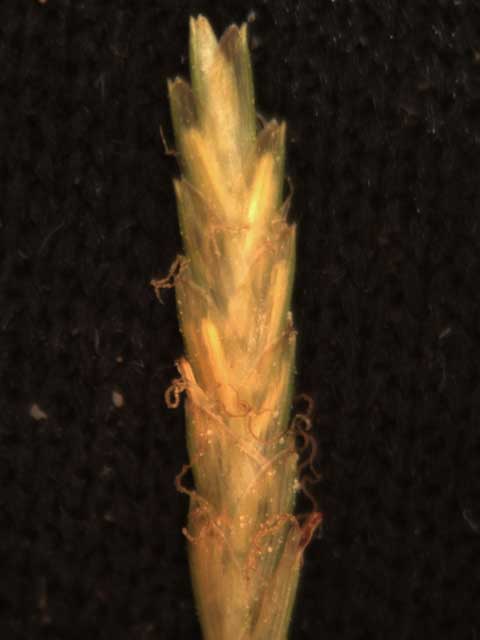Herbicide Effectiveness [top]
Key to Rankings
Barricade/Regalkade
P**
Broadstar
P**
Gallery
P**
OH2
P**
Pennant Magnum
P**
Pendulum
P**
Regal OO
P**
Ronstar
P**
Rout
P**
Showcase
P**
Snapshot TG
P**
Surflan
P**
Treflan
P**
Description [top]
Yellow nutsedge (Cyperaceae) is a perennial sedge that spreads predominantly by rhizomes and tubers, although viable seed can be produced. Leaves are light green, shiny, long, and narrow. Stems are triangular in cross-section and the seedhead is yellow. Tubers are approximately 1/2 inch long. Plants die back to the ground in fall, with new shoots emerging in spring from underground tubers. This species, as well as other sedges, grows best in wet sites, prefers warm weather and full sun conditions, but will grow in a diversity of sites and environments. Nutsedge is nearly impossible to completely hand weed from containers. When nutsedge does occur in containers, search for ways to prevent the introduction in future crops. Besides growing in pots, it also can be a problem in gravel. Only certain preemergence herbicides control yellow nutsedge. Purple nutsedge (Cyperus rotundus), a similar perennial sedge, has brownish-purple seedheads. It is less common in container nurseries, occurs primarily in the southern US, and responds differently to herbicides than yellow nutsedge. [TOP]
